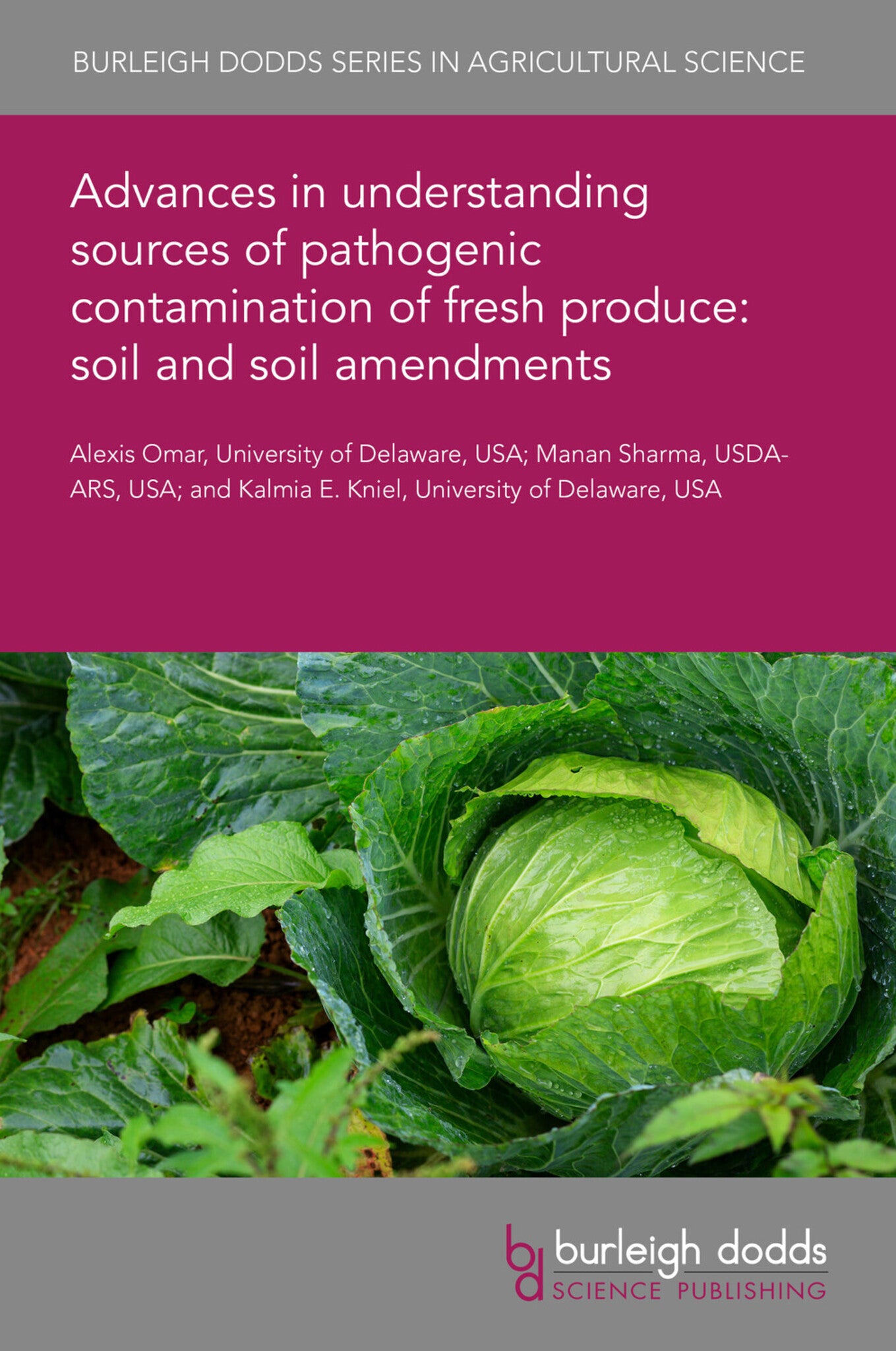We're sorry. An error has occurred
Please cancel or retry.
Advances in understanding sources of pathogenic contamination of fresh produce: soil and soil amendments

Some error occured while loading the Quick View. Please close the Quick View and try reloading the page.
Couldn't load pickup availability
- Format:
-
14 August 2023

Biological soil amendments of animal origin (BSAAO) are essential in contemporary agricultural production to increase crop yield and enrich soil health. BSAAOs may introduce or extend the survival of microbial pathogens that may be transferred to crops. Climate and weather along with amendment type can influence pathogen persistence in agricultural environments. Specifically, moisture and rainfall are critical elements that can enhance pathogen survival in amended soils. This chapter includes a discussion of pathogen survival and transfer along with highlights from recent foodborne illness outbreaks. Reconsidering data presented on E. coli and Salmonella survival in amended soils alongside epidemiological and environmental assessment data is essential to collective growth in this field, as scientists develop recommendations for use and risk analysis. Future use of soil amendments may include use as tools for remediation or inclusion of biocontrol elements to reduce the risk of contamination associated with their application to raw agricultural commodities.

SCIENCE / Life Sciences / Horticulture, Commercial horticulture, TECHNOLOGY & ENGINEERING / Food Science / Food Safety & Security, TECHNOLOGY & ENGINEERING / Agriculture / Agronomy / Crop Science, TECHNOLOGY & ENGINEERING / Agriculture / Sustainable Agriculture, Sustainable agriculture, Agricultural science, Agronomy and crop production

- 1 Introduction
- 2 Pathogen survival in soils containing biological amendments
- 3 E. coli and Salmonella survival in manure dust
- 4 Prevalence of antibiotic resistance genes in manure-amended soils
- 5 Case studies
- 6 Recommendations
- 7 Conclusion
- 8 Future trends in research
- 9 Where to look for further information
- 10 References



